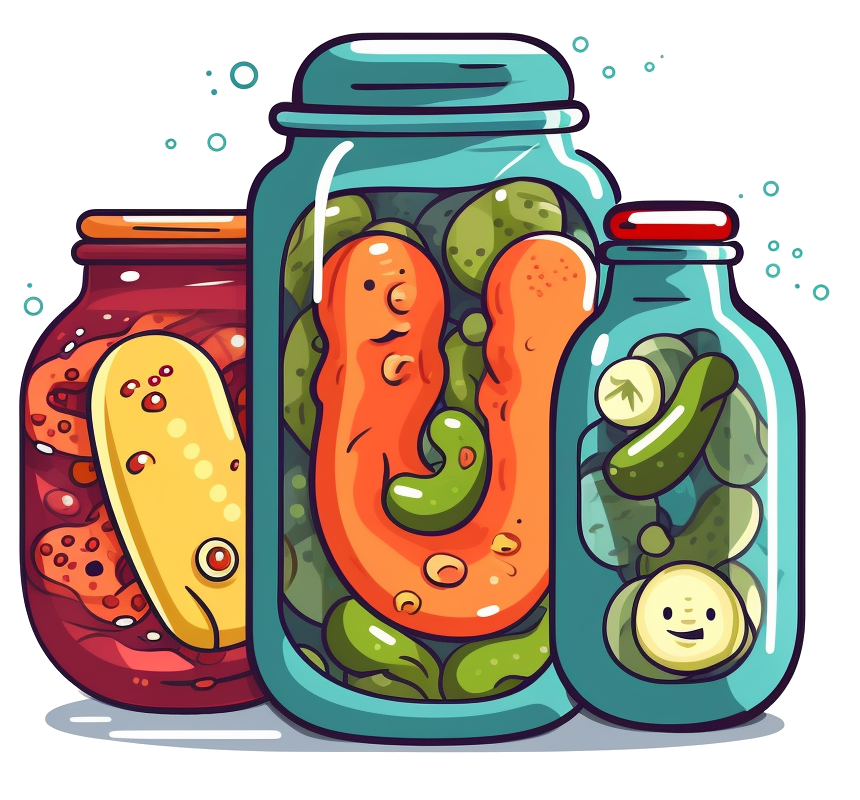I’m thinking mostly of turşu (torshi) and kimchi.
Traditionally, these vegetables are able to ferment fully sealed for weeks, months, or even years. My family ferments turşu for 6 weeks and they fill that bottle to the brim with no problem. But I have seen many reports of people doing European style fermentation who have popped lids and made a mess because they didn’t “burp” the jar.
So what is the difference that makes them not need to release pressure? Can they be made in a metal lid mason jar?
Also, there is vinegar in turşu solution - anywhere from 10% to 50% volume depending on the recipe. Some recipes boil the solution before adding to the jar. I have read many people say both vinegar and boiling will kill your culture, but I have seen both done and they definitely work. Any insights on this?


@yoyolll @bjorney from what I understand, screw top jar lids like with Mason jars are a lot more airtight (and therefore more likely to explode) than twist-off lids, which are more common in Europe. With these the most extreme pressure can escape.
Probably depending on how tightly you close them.
@yoyolll @bjorney Jars with replaceable rubber seals are also not completely pressure resistant. The seal works like a gasket for extreme pressure, leaving moderately high pressure behind. I only use Weck jars now, because it works so well. (Will write a blog post soon…) Other brands are Le Parfait and so on. #fermentation
We do use those jars primarily - the ones with rubber seals. I was wondering if there’s some kind of positive pressure selectivity in this mechanism which would explain why it is watertight under most circumstances, especially at the start while the solution cools and creates negative pressure. If that’s the case, I should expect it to leak slowly if I left it upside down for a long period of time (not brave enough to try though).
I’m looking forward to your blog post.
@yoyolll @kimchiconcept which ones do you use, Weck or Le Parfait-style? Guess they both work great and it’s a matter of taste and if it’s easy to get them.
What do you mean by positive pressure selectivity?
Le Parfait style. It has a replaceable rubber seal.
I mean like the seal is not normally permeable, as evidenced by being watertight (for a period of time) even with some negative pressure inside the jar created by the cooling solution. However, once there is enough positive pressure from fermentation gasses inside the jar, it becomes permeable. In other words, it’s selectively permeable for positive pressure. I suppose that might be due to momentary one-way deformation of the rubber at a certain pressure which might be why you’re not supposed to reuse them for fermentation, and why it’s so important not to open the jar until it’s ready to be eaten. Basically, it might be acting as a very simple one-way airlock. But this is just a guess. And I am probably overthinking it.
@yoyolll @kimchiconcept
> it might be acting as a very simple one-way airlock
That’s what I think it does! If the pressure goes above a certain point, the rubber temporarily gives way. It never completely goes to normal, there’s always a higher pressure inside, once it has gone up. And this way all the oxygen gets displaced, so you end up with a protective atmosphere. At least for long enough until you want to open and eat what’s inside.